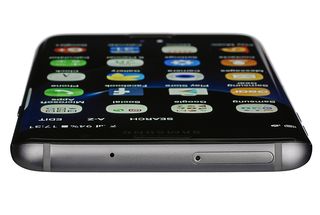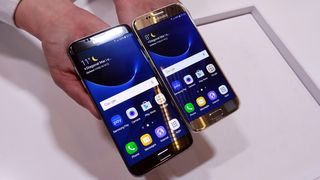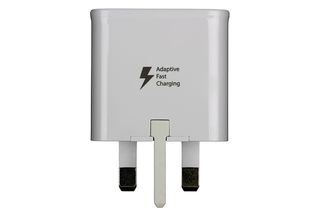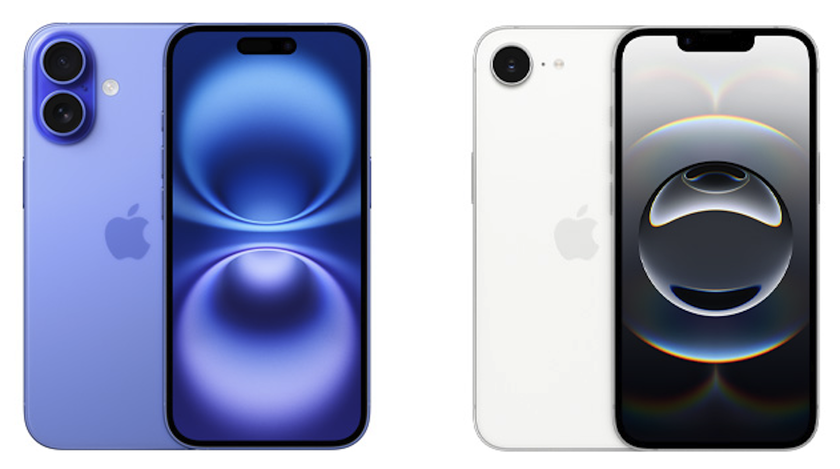What Hi-Fi? Verdict
The world’s most beautiful phone - and its performance is just as impressive
Pros
- +
Stunning design and premium build
- +
Superb screen
- +
Fast performance
- +
microSD card slot
- +
Great camera
- +
Good audio with high-res support
Cons
- -
Music could time a little better
- -
Slight blue tinge to screen off axis
Why you can trust What Hi-Fi?
Look at any one of the celebrity magazines adorning your newsagent’s shelves and it can seem you need little more than beauty to get ahead in this world.
It’s true that a lot of people will pick up the Galaxy S7 Edge for just that reason – it is beautiful to look at. With its curved screen and premium build, some people might even buy it for that reason too.
The good news is that there is more substance to this smartphone than a reality TV star could plump their lips with, which makes its good looks even more of a bonus.
MORE: The best What Hi-Fi? deals of the month
Design

There’s no doubt that a large part of the S7 Edge’s charm is in its design. Pulling it out of your pocket might not cause quite as much of a stir as the S6 Edge did last year, but it still has just as much wow factor.
In fact, there have been some subtle refinements to make it look and feel even better than its predecessor. The back panel now has curvier edges so it feels nicer to hold, and there are no obvious seams or joins between the front and back either, so no sharp or rough edges.
Thankfully its premium metal and Gorilla Glass 4 design gives it a decent amount of purchase too, so it doesn’t feel as if it could give you the slip at any moment. You’ll need to watch out for fingerprints though, as this phone will hoard them like a crime lab.
The S7 Edge sticks with a physical home button which, like last year, doubles as a fingerprint sensor.

Its shape doesn’t allow your finger to nestle into it in quite the same way as the iPhone, but it is just as accurate in our testing. The iPhone might just pip it for speed, but you shouldn’t struggle with inaccurate readings holding you up.
It’s supported by two capacitive buttons either side for back and multitasking. These will light up when touched but fade away again quickly afterwards.
The camera lens has been given the same treatment as in the S7, and now sits more flush to the back panel than before for a cleaner design that won’t wobble when you lay it flat on a table.
And because the Edge isn’t just a pretty face, there’s waterproofing here for the first time as well, allowing you up to 30 minutes at depths of up to 1.5m.
The much-missed microSD card slot makes its return in the S7 Edge, allowing you to boost the on-board 32GB storage by another 200GB, with 4GB of internal RAM to support it.
If you intend to make use of this functionality, you’ll want to invest in a decent high-speed microSD card for the smoothest performance.
MORE: Samsung Galaxy S7 review
Screen

The S7 Edge packs a new 5.5in screen, which sits in the middle of last year's S6 Edge and S6 Edge+.
It’s a good move – this handset is big enough to make the most of the innovative screen without encroaching on the Galaxy Note family, the seventh iteration of which we’re expecting to see soon.
It’s a touch big for one-handed use, but that’s something we got over some time ago. Big screens are great for video on the go, and, when the screen is this gorgeous, you won’t mind using two hands to navigate it.
Samsung has done a great job of squeezing a decently sized screen into such a small form factor – this handset is considerably shorter and narrower than the iPhone 6s Plus, and doesn’t feel that much bigger to work with than its smaller S7 sibling.
The Edge is more useful this year too, with Samsung adding more functionality that can be accessed with a swipe outwards from the edge display.
MORE: Samsung S6 Edge review

Previously this included a small number of app shortcuts and your five favourite contacts, but it now also allows you to add in a snapshot of your diary for the day, a compass or weather information, plus shortcuts to specific functionality (like open the front-facing camera, or compose a message). It’s double width to allow you to fit more in it too.
Samsung has also opened up the SDK, which means you can download an increasing number of third-party Edge apps, from newsfeeds to (unofficial) Whatsapp and Spotify controllers, making the Edge much more useful indeed.
As for screen tech, Samsung has stuck with its QHD Super AMOLED screen at 2560 x 1440 and 534ppi.
It also offers the always-on display technology that we saw in the S7, allowing you to have the time, date and notifications appearing on your screen at all times with very little impact on battery life – about one per cent an hour.

It’s not for everyone though, and it could be better – we found it a little bright at night (you can’t adjust the brightness), and it’s a shame that it will let you know only about notifications from Samsung apps like messages and email, but not Whatsapp or Facebook.
Thankfully since launch, Samsung has now given you the option to turn the always-on display off, or choose for it to be on just a certain portion of the day. Add in the ability for third-party notifications and it could become something that’s really useful.
As for watching video on it, it’s a delight. The screen is super sharp whether you’re watching downloaded HD content or streaming from Netflix, and text on webpages is clear and easy to read.
MORE: What is Google Cast? What speakers and TVs are available?

As with most Samsung phones, you’re able to pick the colour balance of your display. Adaptive comes switched on as standard but we’d recommend looking elsewhere – we find it oversaturates colours far too much.
The same goes for AMOLED Cinema (it’s the mode Adaptive switches to when you’re watching movies), and we tend to opt for the Basic mode, which is the most natural.
It’s arguably a touch on the cool side, and you can warm it up a little by trying out AMOLED Photo, which will add a bit more oomph to colours and skin tones without going overboard.

Blacks are great here thanks to the AMOLED screen, and whites pop through dark scenes with plenty of punch, though the Galaxy S7 does handle contrast just a touch better than its bigger sibling.
You’ll also notice just a bit more depth to darker shades on the S7 when viewed side by side, but it’s slight and not something that’s distracting in isolation.
Viewing angles aren’t as good as you’ll see on IPS screens either, and the screen can take on a slight bluey tinge when viewed off axis.
But this doesn’t take away from what is really a brilliant overall viewing experience, with the Edge display somehow making the picture look as though its floating right on top of the screen. We love it, and we’ve no doubt you will too.
Camera

The camera in the S7 Edge is the same as in the regular S7, so takes the same dip in megapixels from 16MP to 12MP, but there’s much more to it than that.
For a start, it packs dual-pixel autofocus, a world first on a smartphone and something usually found only in full-blown DSLR cameras. It basically allows for almost-instant focusing speeds in around 0.2 seconds.
Not only does it mean you’ll get great, sharp shots without waiting around, but it’s also able to track fast-moving subjects and keep them in focus throughout.
It works. The S7 Edge is able to flit between tap-to-focus subjects without delay, and its autofocus is hugely reliable as well, picking the most likely focus of your shot and locking in on it.

Snapping is really quick too, so you can fire shot after shot without worry, and you won’t be held up when you opt for extra processing either - HDR mode for instance.
It’s not just the autofocus that’s improved. The S7 Edge’s camera now has a larger aperture (up from f/1.9 to f/1.7) that lets in 25 per cent more light than before, plus its pixel size has increased to absorb more than 50 per cent more light too.
All of this means better results in low light, and the S7 Edge is able to boost a dimly lit scene by some amount, while still hanging on to a decent amount of detail.
Noise is kept largely at bay for all but the darkest scenes, though you might notice any highlights in a shot can look slightly overblown as the lens attempts to draw in more light.

It’s a solid performance nonetheless, and daytime shots are even better. Expect sharp, bright and beautifully coloured photos with good amounts of detail and a strong handle on contrast.
The 5MP selfie camera can look a little oversmooth for our tastes, even with the Beauty Mode turned off, but we do love the wide-angle lens that allows us to get more of our mates in shot than the iPhone 6s.
Finally, for the budding photographers among you, there’s a decent Pro mode with a good number of manual controls, and the ability to shoot in RAW as well as JPEGs.
But for those of you who don’t know your aperture from your ISO, the auto mode should see you well sorted for most situations.
MORE: Best smartphones 2016
Audio

Audio hasn’t been a focus for Samsung in quite the same way as it has for LG, but it has been making subtle improvements since the days of the Galaxy S4 and S5.
It supports 24-bit/192kHz files, and does a great job with any bitrate you throw at it, from our high-resolution library to Tidal and Spotify streams.
It’s a clean and well-organised performance, capable of digging out a good amount of detail and decent dynamics.
It’s a good tonal balance too, with a tight, well-controlled bass and clear, focused midrange, plus a treble that never sounds hard or thin.
MORE: Listen to the What Hi-Fi? playlist

It manages to sound a little more solid than its S7 sibling too, with a touch more body to boot, but in the process, drops ever so slightly on its timing, leaving the standard S7 holding the upper rhythmic hand.
It’s not enough to cause much concern though, and the S7 Edge remains a thoroughly enjoyable listen that will keep you plenty entertained.
Curiously, Samsung’s own music player is nowhere to be seen on either version of the S7, with Google’s Music app sitting pretty instead.
You can download the Samsung player from the Play Store if you wish (along with plenty of other options), but Google’s version does the job just fine.
Performance and battery life

Samsung has squeezed even more power into the S7 Edge than last year, with a new octo-core Exynos processor (for the UK – the US gets the Qualcomm Snapdragon 820) that promises to be 30 per cent faster than last year.
There’s also a 64 per cent faster GPU for even better graphics and 4GB of RAM to support it all.
The S6 Edge never kept us waiting, but the extra horsepower makes the S7 Edge feel faster and slicker than ever. It powers through menu swipes and app transitions with ease and tackles graphic-heavy gaming without a stutter. We’ve certainly got no complaints.
Battery life gets a bit of a boost over the predecessor too, with a 3600mAh battery over last year’s 2600mAh. That’s a significant uplift, and even with the bigger screen to power, it’s noticeable.
MORE: What is Android Auto? How it works, the apps, cars, features

We streamed a 90-minute film from Netflix at full brightness with wi-fi turned on and it used 13 per cent of the battery.
Add on to that some day-to-day calls, messages and browsing, and we found it can manage a solid day of usage without the need to carry your charger around with you (we’re looking at you, iPhone).
As with the S7, gamers can also access the new Game Tools feature on the S7 Edge as well, which will allow you to lower the resolution and frame rate of games you’re playing to put less strain on the battery.
Not an option for those who want the very best performance of course, but a nice additional feature to get more from your battery when you need it.

Games Tools will also allow you to turn off pesky notifications while you’re deep into a gym battle in Pokémon GO, lock the capacitive keys to stop you exiting a game by accident and even film your gaming pursuits too.
Finally, Touchwiz looks better than ever, and that clunky, heavy-handed skin from a few years ago is all but gone.
Bloatware is down (you still can’t uninstall Samsung’s own apps or the full Microsoft Office suite that comes included, but one step at a time), app icons are less cartoony, and transitions aren’t as showy.
As a result everything runs a lot smoother, and we're not reaching for the Google Now Launcher quite so quickly.
MORE: Samsung Galaxy Note 7 review
Verdict
It’s no secret we were huge fans of last year’s Galaxy S6 Edge in both its screen sizes, but the S7 Edge betters it in every way.
The refined design makes the S7 Edge more desirable than ever, and the new 5.5in screen size seems to have the perfect dimensions for getting the most out of it – and the new software tweaks are beneficial too.
Its screen is as gorgeous as ever too, and with a performance that blazes through any task we throw at it, plus one of the best cameras we’ve ever seen on a smartphone, there are not many places where the S7 Edge leaves us wanting. It’s even waterproof for those accidental spills.
Yes, it’ll cost you a premium – around £90 outright and £5-10 a month more on contract – and that can be hard to justify when the S7 carries a lot of the same specification and benefits.
But the S7 Edge's unique design is both what causes this price hike and justifies it, and those with the budget for its beauty and the desire for a bigger screen than the S7’s should certainly give it some serious consideration.
See all our Samsung reviews
What Hi-Fi?, founded in 1976, is the world's leading independent guide to buying and owning hi-fi and home entertainment products. Our comprehensive tests help you buy the very best for your money, with our advice sections giving you step-by-step information on how to get even more from your music and movies. Everything is tested by our dedicated team of in-house reviewers in our custom-built test rooms in London, Reading and Bath. Our coveted five-star rating and Awards are recognised all over the world as the ultimate seal of approval, so you can buy with absolute confidence.













